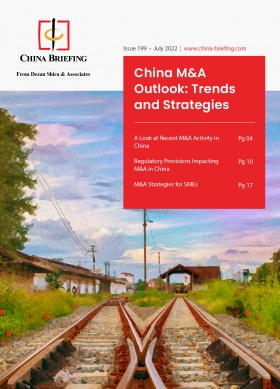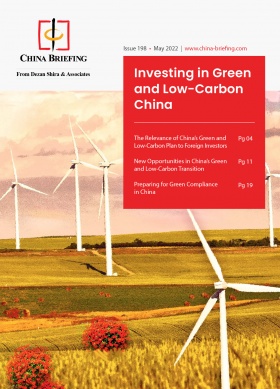China’s Economic Roundup for August 2022
China’s economic indicators for August 2022 beat expectations, while the dwindling trade growth and troubled real estate sector cast a shadow over long-term optimism. Given this, the government has introduced a flurry of new supporting measures to shore up the economy.
China’s economy is demonstrating resilience amid several challenges, according to recently released government data.
Economic indicators from August offer promising signals for retail and industrial production, with both categories surpassing analysts’ expectations. However, poor trade and real estate indicators demonstrate ongoing fragility in China’s economy.
The economic data comes amid a flurry of new government measures to support the economy, including new investments in infrastructure and the extension of tax deferrals for businesses. Here, we look at the current state of China’s economy and how the government is supporting its recovery.
August economic data beats expectations
China’s economic indicators for the month of August beat expectations, demonstrating a rebound over July’s weak performance.
Retail sales growth in August rose by 5.4 percent year-on-year, up from just 2.7 percent in July and significantly outperforming the Reuters forecast of 3.5 percent growth. Passenger car sales were particularly strong, while cosmetics and home furniture declined. Further, online sales of physical goods increased by 12.8 percent.
Catering sales increased by 8.4 percent, reflecting a bounce back from disruptions to the sector a year ago because of COVID-19 containment policies.
Industrial production grew by 4.2 percent, surpassing the Reuters forecast of 3.8 percent and July’s growth rate, which was also 3.8 percent. Part of this growth was driven by a sharp increase in auto production, which rose by 33 percent.
Additionally, fixed asset investment rose by 5.8 percent, also beating the forecast of 5.5 percent. Growth in fixed asset investments were driven most strongly by investment in the manufacturing sector, which increased by 10 percent from the previous year.
While many of China’s economic indicators for August exceeded expectations, real estate continued to struggle amid the sector’s deepening crisis. Real estate investment fell by 7.4 percent year-on-year, steeper than July’s already significant drop of 6.4 percent.
Further, in August, new home prices decreased by 1.3 percent year-on-year, which represents the sharpest decrease since 2015. A recent Reuters forecast predicted that property sales would fall by 24.5 percent in 2022.
On the other hand, export growth slowed to 7.1 percent year-on-year amid weak global demand after posting an 18 percent increase in July, missing expectations of 12.8 percent growth. Likewise, imports grew by just 0.3 percent, down from 2.3 percent in July and missing the 1.1 percent forecast.
Economic conditions leading to greater household savings
The August economic data shows promising signs for China’s economy, but they do not necessarily presage a longer-term trend. Though many of the indicators beat expectations, the forecasts were low because of the many economic headwinds that have slowed China’s economy in 2022 – most of which remain largely unchanged.
The government’s “zero COVID” policy leads to travel restrictions and the sudden closures of neighborhoods, factories, offices, and ports, causing decreased trade and investment. The country’s property sector is fragile, resulting in dwindling sales and developer defaults, while inflation dampens global demand for Chinese products.
These various economic issues are contributing to a shaky job market – especially for young people. China’s urban youth unemployment in August stood at 18.7 percent, down slightly from a record high of 19.9 percent in July. In comparison, the overall urban unemployment rate in August was 5.3 percent. The Chinese tech giants Alibaba and Tencent are among notable companies that laid off thousands of employees in recent months.
Many who are employed are also feeling financial pressures. According to the recruitment firm Zhilian Zhaopin, the average salary in 38 major cities decreased by 1 percent in the first quarter of 2022, while industry surveys show that many workers have been forced to take pay cuts.
Together, these economic headwinds are contributing to thriftiness among consumers in China, as people avoid spending amid economic uncertainty – or are left unemployed altogether.
Though retail sales were higher than expected in August, they came off a low base of 2.5 percent growth in 2022 and continue to lag behind the pre-pandemic pace of 7 percent and above, as consumers opt to save rather than spend. Overall, retail sales through the first eight months of 2022 have only grown by 0.5 percent year-on-year.
China’s middling consumption indicators mirror the higher rate of household savings. According to a survey from the People’s Bank of China, close to 60 percent of respondents were more likely to save rather than consume or invest, up from 45 percent in 2019. This preference is showing up in practice, as through the first eight months of 2022, Chinese households have added RMB 10.8 trillion (US$1.54 trillion) in new bank savings, compared to RMB 6.4 trillion (US$913.15 billion) over the first eight months of 2021.
Measures to strengthen the economy
In light of these economic challenges, in recent weeks the Chinese government has announced an array of measures to stabilize the economy. These include measures to reduce burden on individuals and businesses, and to promote investment and consumption.
Some of the notable measures are discussed below.
Tax deferrals
On September 14, 2022, the State Taxation Administration and the Ministry of Finance jointly announced the extension of tax deferrals for micro, small, and medium-sized manufacturing enterprises and self-employed households. The announcement extends the existing tax deferral policy to the end of the year, beginning on September 1, 2022.
Qualified entities can benefit from tax deferrals on corporate income tax, personal income tax, value-added tax, consumption tax, urban maintenance and construction tax, and education surcharges. The extension stands to contribute an estimated RMB 440 billion (US$61.72 billion) in tax relief.
Infrastructure investment
On August 24, 2022, the State Council announced a set of measures that will collectively provide over RMB 1 trillion (US$140.28 billion) in funding to improve infrastructure. This includes a decision to allow local governments to issue an additional RMB 500 billion (US$70.14 billion) in special purpose bonds by the end of October 2022, which will be used to fund roads, railways, airports, affordable housing, and energy projects.
Special purpose bonds are a means for local governments to raise money and are often used to fund infrastructure projects. The US rating agency Moody’s estimates that special purpose bonds accounted for 72 percent of all Chinese government bonds issued in the first half of 2022.
Interest rate cut
On August 22, 2022, the People’s Bank of China slashed the five-year loan prime rate from 4.45 percent to 4.30 percent and reduced the one-year loan primate rate from 3.70 percent to 3.65 percent. Earlier in the month, the bank also lowered the one-year medium-term lending facility loan rate and the seven-day reverse repo rate.
The rate cuts are designed to encourage lending and boost demand. The policy stands in contrast to those of most other economies, which are raising interest rates to curb inflation.
Ongoing support for the economy
Overall, the Chinese government has released over 50 economic support measures since May 2020. Other measures include interest rate subsidies on loans, credit support for financial institutions, and industry-specific support.
For the most part, these policies seek to stabilize the economy and reduce economic hardships rather than provide macro-level stimulus. If successful, this policy approach will stabilize the Chinese economy and set the stage for a sustainable recovery in 2023 and beyond, without saddling the government with high levels of new debt.
Accordingly, individuals and businesses in China can expect additional supportive measures in the weeks and months ahead.
About Us
China Briefing is written and produced by Dezan Shira & Associates. The practice assists foreign investors into China and has done so since 1992 through offices in Beijing, Tianjin, Dalian, Qingdao, Shanghai, Hangzhou, Ningbo, Suzhou, Guangzhou, Dongguan, Zhongshan, Shenzhen, and Hong Kong. Please contact the firm for assistance in China at china@dezshira.com.
Dezan Shira & Associates has offices in Vietnam, Indonesia, Singapore, United States, Germany, Italy, India, and Russia, in addition to our trade research facilities along the Belt & Road Initiative. We also have partner firms assisting foreign investors in The Philippines, Malaysia, Thailand, Bangladesh.
- Previous Article Hainan Free Trade Port’s New Preferential Tax Policies: How do They Apply (updated)
- Next Article China’s First Ever Private Pension Scheme – What You Need to Know








